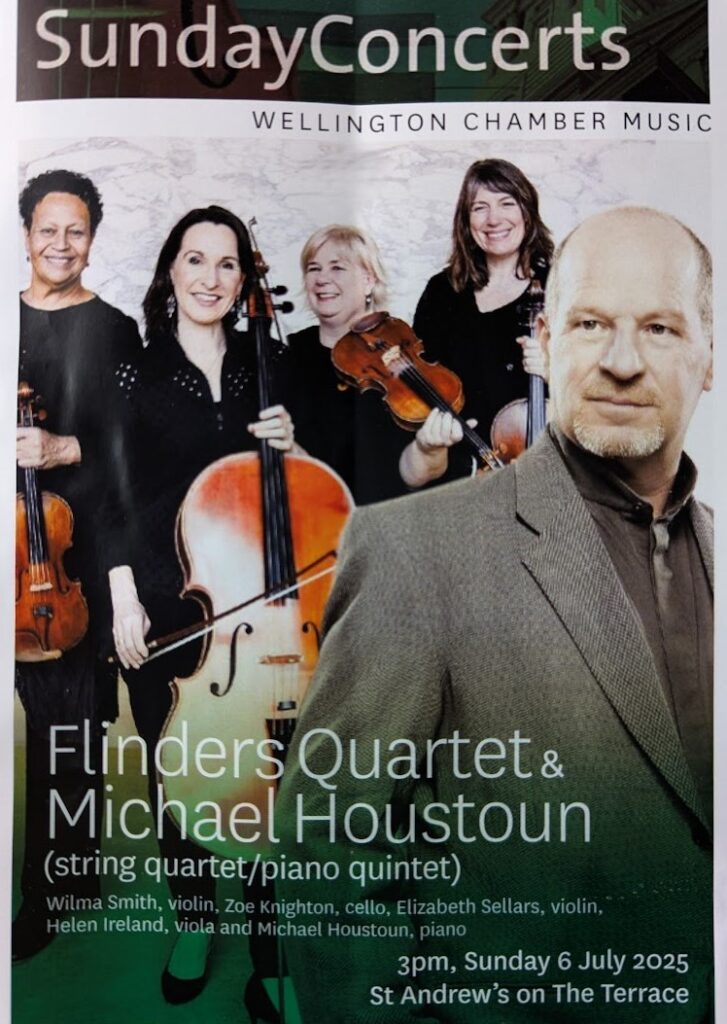
Wellington Chamber Music Sunday Concert –
Flinders Quartet and Michael Houstoun
BEETHOVEN – String Quartet No. 11 in F Minor Op. 95 “Serioso” (1810)
DEBORAH CHEETHAM FRAILLON – Bungaree (for String Quartet) – 2020
DVOŘÁK – Piano Quintet No. 2 in A Major Op.81 (1887)*
Flinders Quartet – Elizabeth Sellars and Wilma Smith (violins), Helen Ireland (viola),Zoe Knighton (cello) – *with Michael Houstoun (piano)
St.Andrew’s-on-The-Terrace, Wellington
Sunday, 6th July, 2025
Now here was an enterprising programme, with cosmopolitean content allied to a distinctly trans-Tasman flavour supplied by the Melbourne-based Flinders Quartet, whose second violinist today was Fijian-born ex-New Zealander Wilma Smith – and was joined in the programme’s second half, by a Wellington audience favourite, pianist Michael Houstoun. Contributing to the “Antipodean” feeling of the occasion was the Quartet’s presentation of the New Zealand premiere of a work by Aborigine Australian composer Deborah Cheetham Fraillon, a beautifully ambient work for string quartet with the title “Bungaree”, a musical characterisation of one of the most significant “First Peoples” in early colonial Australia, and of whom there’s more later in this review.
Firstly, though, came music by the acknowledged “everyman” of composers, Ludwig van Beethoven, though here in an uncharacteristic, less-than-all-encompassing mood, with a quartet he himself described as “never to be performed in public”. This was his Op.95 F Minor Quartet which takes its nickname from the composer’s own designation of the third movement – Allegro assai vivace ma SERIOSO (my emphasis), a description that eminently suits the remainder of the work as well, such as its intensely wrought opening. The composer’s determinedly experimental features included a fierce condensation of expositional material,, unpredictable modulations and incendiary contrasts as if fuelled as much by anxiety and fury as by any exploratory impulses.
I thought the Flinders Quartet utterly “possessed’ these same impulses from within, particularly throughout the first three movements – the players’ quick-fire dynamic and trajectorial contrasts during the first movement were to be relished, as with both the viola’s and cello’s gorgeously lyrical playing of the second theme, and, later, the wonderful “sting” of the violins’ off-beat notes during the coda, followed by that almost unnervingly quiet ending to the music! And in the second movement I thought the themes compellingly “shaped” (a lovely, plaintive tone from the viola in particular in the fugue, for instance). It seemed the later “ornamentation” of the fugue here was more “shadowy” than I’d often heard, more, perhaps of an “intimate” quality, and suggesting further that the composer was primarily writing the music for himself. Compelling, too, were the lovely free and floating tones of the ‘cello in the introduction’s return, and with those “wrong note” cadences here sounding wistful and remote rather than self-consciously attention-grabbing.
Those same “quick-fire dynamics” helped launch the Scherzo, into which the players plunged with tremendous forward drive, and whose momentums all the more underlined the almost vertiginous “upward lurch” into the Trio, the winsome sounds having a kind of improvised, “out of the air” quality. I did enjoy the Scherzo’s return on each occasion for the players’ heightened sense of overlapped “gambolling” and the “what now?” reappearance of the Trio, this time very much aware that its time was limited (as was the Scherzo’s itself!).
The “sighing” opening of the finale held our expectations momentarily in suspense before transforming its tentative two-note concluding phrase into quicksilver. – suddenly the trajectories galvanised with the theme urgent and agitated, the group superbly bringing together the strands for the vortex-like repetitions from whose clutches the music wrestled its way forwards and into moveable space – incredible twice-times over excitement, but all done by the players here with as much whimsy as desperation! They put a bit more “schwung” into the strong, resolution-like phrases which took the work to its softly-voiced, enigmatic, “out-of-nowhere” F-major chord releasing the music from its slough of despond, and taking us all here at breakneck speed into an ending which one commentator described as “absurdly and deliberately unrelated” to the work as a whole. I liked the programme’s reference to American composer Randall Thompson’s remark re the ending that “no bottle of champagne was ever uncorked at a better time!”
The programme’s next item would have been for many people in the audience something of an unknown quantity, as would have been its composer – Deborah Cheetham Fraillon, born in 1964, is an Aboriginal Australian soprano, composer, playwright and educator who has worked ceaselessly to help re-establish her and her people’s First Nations Australian heritage. Separated from her birth-mother when only three weeks old, she grew up with adopted parents in Sydney, discovering only later that many of her original First Nations family members were musicians – and so music became an integral way of reconnecting at what she called “a much deeper level”. She now champions the voice and visibility of indigenous musicians by means of the example of both her own pioneering work as a creator and an organiser, and of her many achievements and awards in these same performing arts, as well as her continuance as an instigator and director for the development of indigenous artists.
Cheetham wrote Bungaree in 2020, a work named after the historical figure Bungaree, a leader of the Garigal clan at Broken Bay, north of Sydney, one whose intelligence and ability to interact with the growing colony of Europeans enabled him to quickly learn English and befriend English explorer Matthew Flinders and travel with him as an intermediary with indigenous people they would meet on Flinders’ circumnavigation of the Australian continent in 1802-03. Afterwards Bungaree became a familiar figure for colonists in the Sydney/Port Jackson area, together with his “principal” wife. Karoo (also known as Cora Gooseberry). He was patronised by the Governor, Lachlan Macquarie and granted an allotment of land at George’s Head, achieving a kind of celebrity status as “Chief of the Broken Bay Tribe, though his importance was arguably seen through colonial eyes as “quaint” rather than significant for his people and their cultural heritage. He died in 1830.
I was fascinated, while exploring the resources I needed to build up a “picture” of this singular personality, to encounter frequent “cautionary” messages intended for indigenous people who might similarly encounter this material which “contained names, images and voices of deceased persons” – obviously a cultural “non-practice” practice, similarly alluded to in the programme note when it points out the musical depiction of Bungaree’s name is something that in itself deserves sensitivity in relation to certain people. This was here how the work began – the three lighter instruments playing long-held notes, while the ‘cello in recitative style “sounded” the name – the violins and viola then played melismatic elaborations of the held notes, elaborating on the ‘cello’s solo, all strangely and satisfyingly ritual-like to my ears! Motifs were sounded variously as pizz. and arco, continuing to frame the sonic landscape as the variations seemed to push out the boundaries. The music had a hypnotic quality of energy and timelessness, with the cello’s repeating of the “name” sparking some energies which ranged from playful to furious – in places I was reminded by the sharp-edged tremolandi figures of Sibelius’s “Lemminkainen in Tuonela” and I wondered whether these and further were suggestive of Bungaree’s and Flinders’ experiences while circumnavigating the continent.
The second movement, Kaaroo, was a depiction, we were told, of Bungaree’s wife, highlighting her “beauty and strength of character”, which the rhapsodic nature of the ensuing music lost no time in
declaiming, upon all the instruments, with the ‘cello then adding a separate voice, and the “portrait” incorporating passages of agitation suggesting movement, action, and even conflict. These were repeatedly alternated with sequences recalling the beauty and tranquility of the piece’s opening – a stunningly vibrant and feisty personality, perhaps? A brief pause brought in the final section “Navigating the Truth”, whose “totality” I confess puzzled me a little (perhaps here I’m like the concertmaster in cellist Zoe Knighton’s story, who played those famous violin solos in Strauss’s Ein Heldenleben brilliantly without ever realising they were “about” something specific!) – Cheetham began the piece in epic-like fashion, depicting a great vista and suggesting the beginning of a journey. But though the melodic detail developed plenty of variation, and the players began to increasingly “dig into” the material towards the end I found myself wondering (perhaps like the hapless concertmaster at the end of his terrific solos) just where the music had taken us to – I was expecting some kind of obvious transformative revelation, (as suggested by the title), but Cheetham’s “way” was perhaps too subtle for me to glean on a single hearing from this music, all of which left me with the desire to hear the work again. with more (fewer?) open-minded expectations!
I was on surer ground with the concert’s concluding item, a favourite chamber work I’d known since my student days, Antonin Dvořák’s adorable Piano Quintet, his second and more satisfying attempt at the form (he’d initially planned to revise his earlier (Op. 5) Quintet, but thought better of it, deciding to start afresh!) This new work begins beguilingly with a cello theme accompanied by the piano, before the other instruments burst into the picture, the players relishing the contrasts between the music’s lyrical and energetic sequences. I loved the “openness” of Dvořák’s textures, even in the most heavily-scored places, and the enchantment of exchange in those passages where, firstly, the first violin replies so tenderly to the piano’s reiteration of the opening, and then when the first movement’s “second” theme (introduced beautifully by the viola) undergoes all kinds of changes before the instruments gather in the trajectories as the piano plays haunting diminished-note flourishes which bring in the development – Dvořák is so gorgeously exploratory, throughout, and the sense these players give of journeying with us through these fascinating sound-vistas is palpable, right to the movement’s end!
The slow movement’s opening is so very Bartok-like for any ex-piano student (on hearing that melody I could practically “see” the title page of my “For Children” Bartok piano-book all over again!) – and here, adding to the nostalgia of remembrance was the beauty of the viola’s “reply” to the piano’s plaintive opening phrase. The players moved the music to a happier place, with ingratiating pizzicato trajectories from the violins, the ‘cello then taking a richly-toned turn at solo before the music jumped suddenly into activity with a vigorous jig-like tune! – one that, when we’d all breathlessly welcomed the melancholic three-note theme back, we realised it was actually the same tune, but on “speed” or something similarly enlivening! For Dvorak this is, conversely, something of a Brucknerian movement in terms of its scale, with the players here beautifully sustaining its mood and variety of energies and utterances.
Then came one of those Dvorak movements – a scherzo – that can’t help but delight with every hearing! – after the strings and then the piano trip the light fantastic opening, the ‘cello gets the brief but gorgeous second tune, before the opening returns, the piano so effervescent with those wonderful “top of the keyboard” notes that I always listen out for. Each of the violins has alternated turns at the winsome second theme – BUT WHAT A GORGEOUS TRIO! – solemn and chordal but gently rhapsodic in a heart-rending way, before the scherzo dances back in and whirls us all about to its conclusion.
The finale’s ”get ready “ introduction primed us up for more fun – though I’ve a soft spot for the “rustic jollity” approach, I’ve always enjoyed the “brilliant and breathless”, with exhilaration and energy rather than bucolic charm on the menu. I must admit the mid-movement fugato is very exciting at this speed – a kind of “hang on tight” approach that works really well – afterwards the players saved their great crowning gesture of effusive homecoming for the coda proper with the strings and piano then enjoying the concluding rush of energised celebration. We in the audience took our cue from this and joined in at the end with like acclaim!
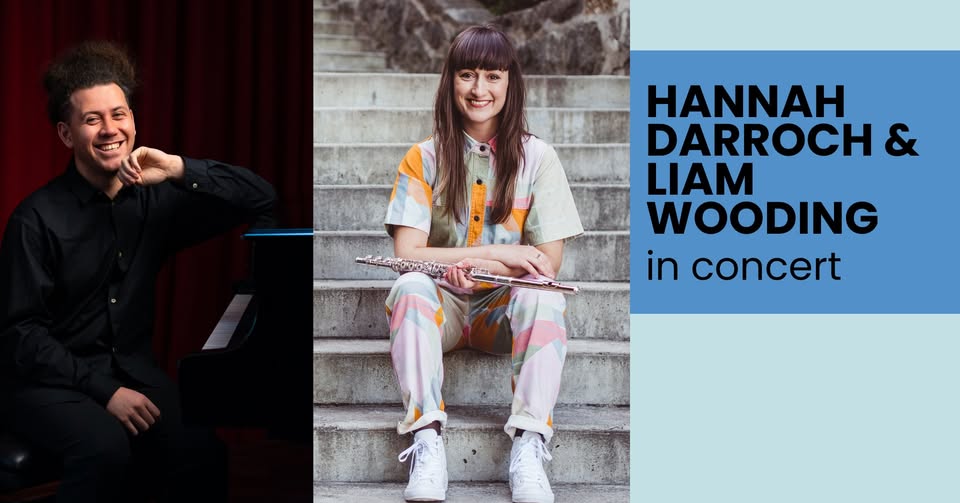
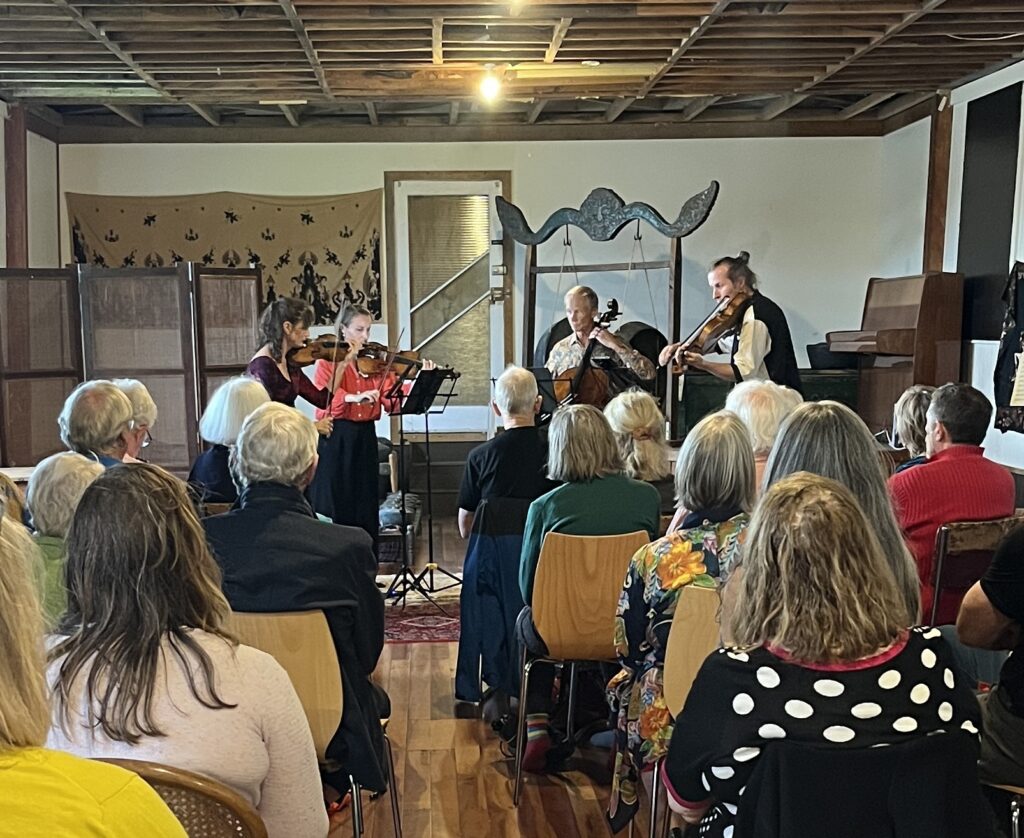 Helene Pohl and Anna van der Zee (violins), Rolf Gjelsten (‘cello) and Nicholas Hancox (viola) play Shostakovich
Helene Pohl and Anna van der Zee (violins), Rolf Gjelsten (‘cello) and Nicholas Hancox (viola) play Shostakovich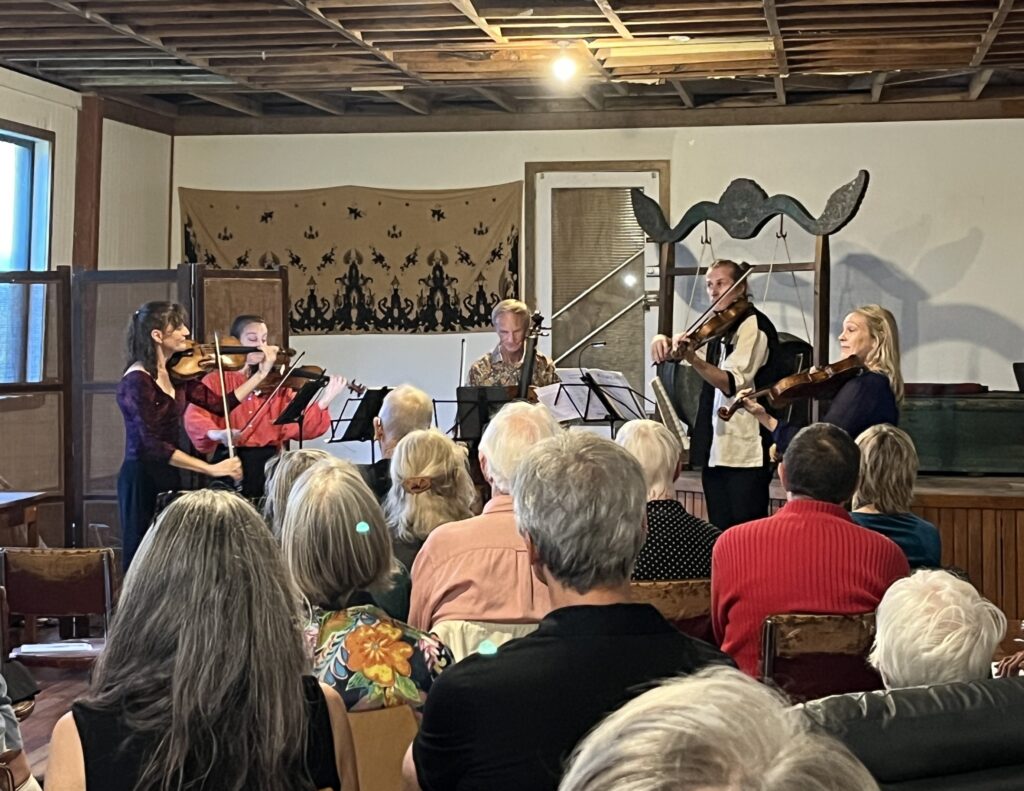 Julia Joyce (viola) and the Chamber Pot-pourri Ensemble play Mozart
Julia Joyce (viola) and the Chamber Pot-pourri Ensemble play Mozart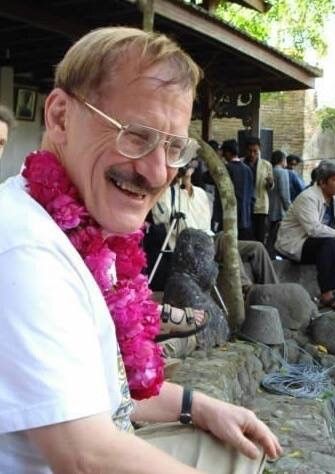
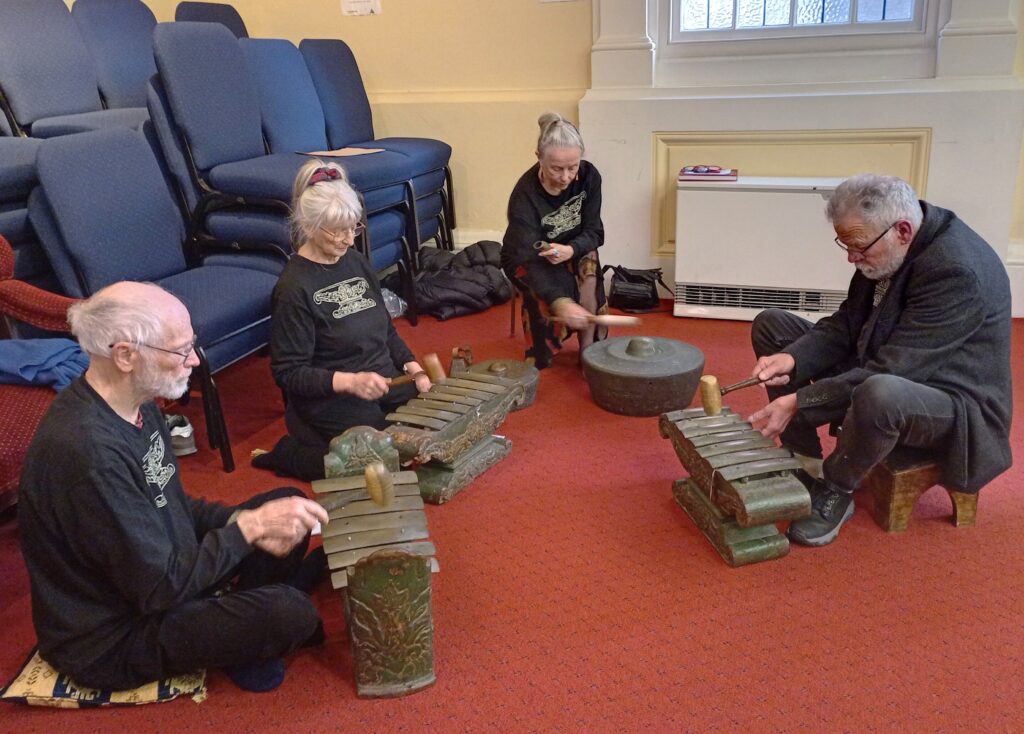
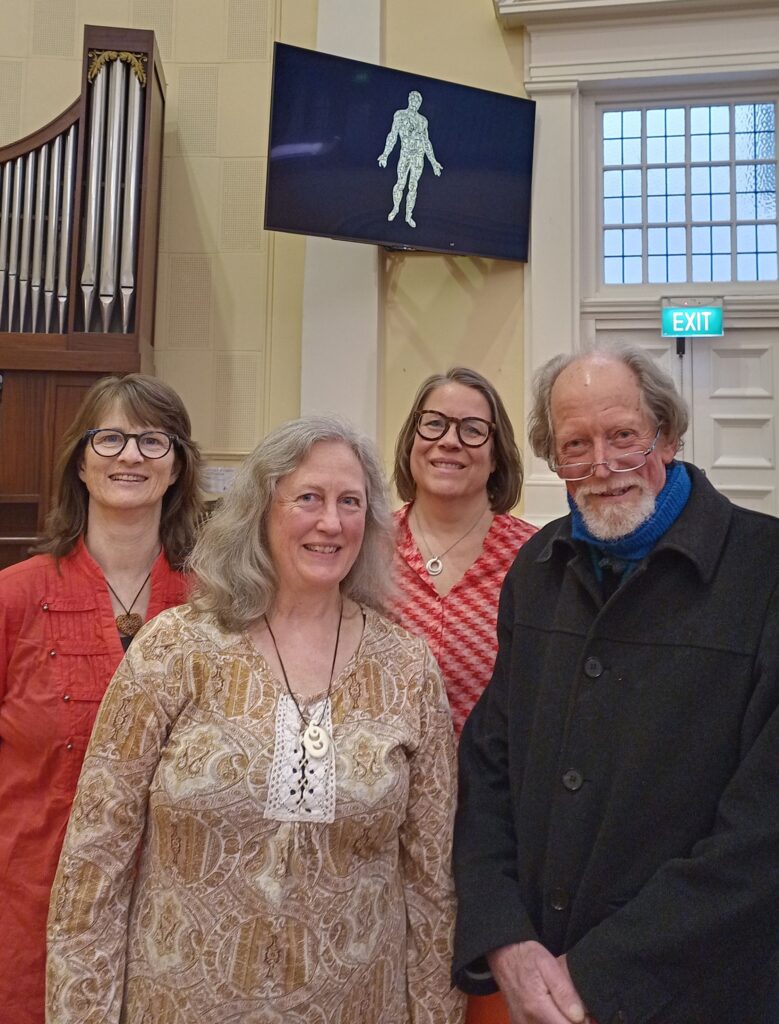
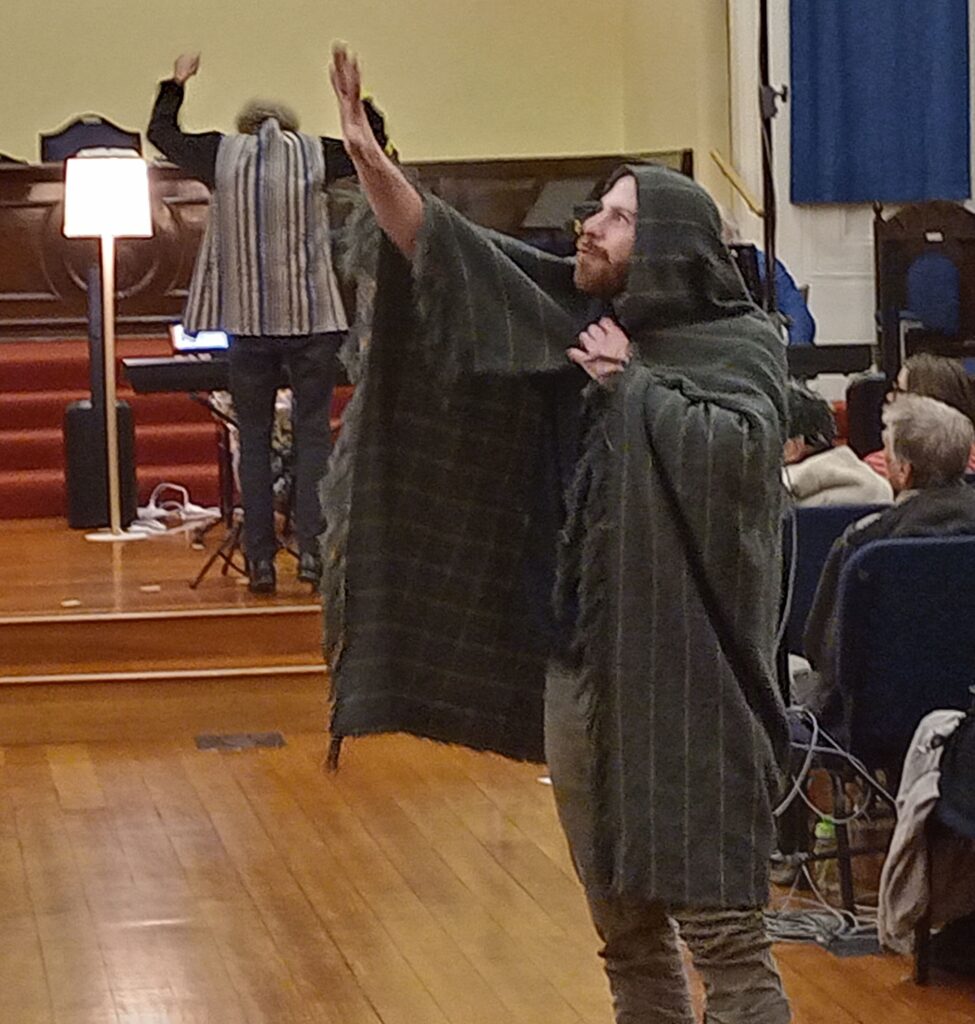 “Turtle Time” with speaker Jonathan O’Drowsky, and conductor Robert Oliver.
“Turtle Time” with speaker Jonathan O’Drowsky, and conductor Robert Oliver.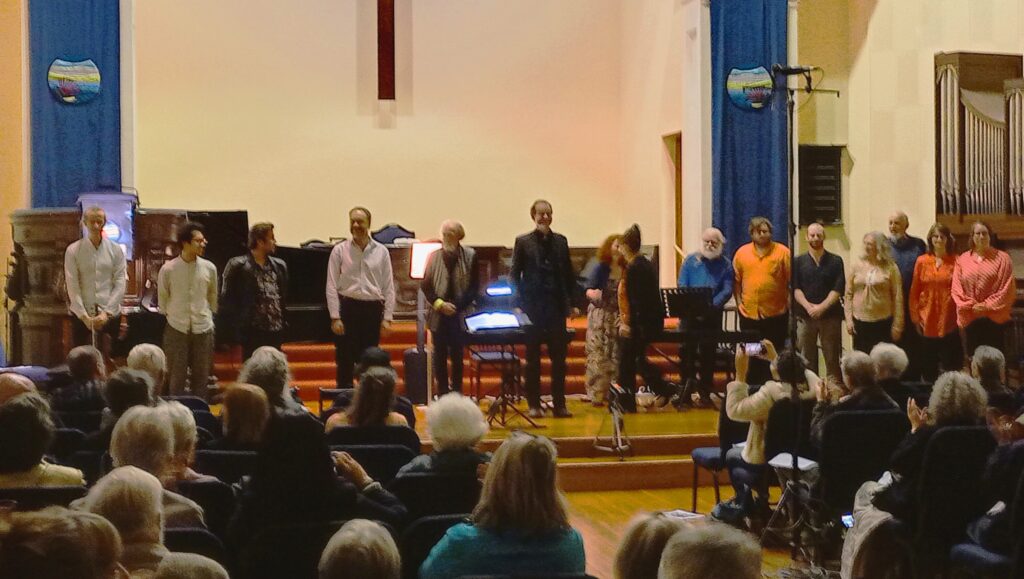 Some of the performers at the conclusion of “Jack@80” at St. Andrew’s-on-The-Terrace Church, Saturday 12th October, 2024
Some of the performers at the conclusion of “Jack@80” at St. Andrew’s-on-The-Terrace Church, Saturday 12th October, 2024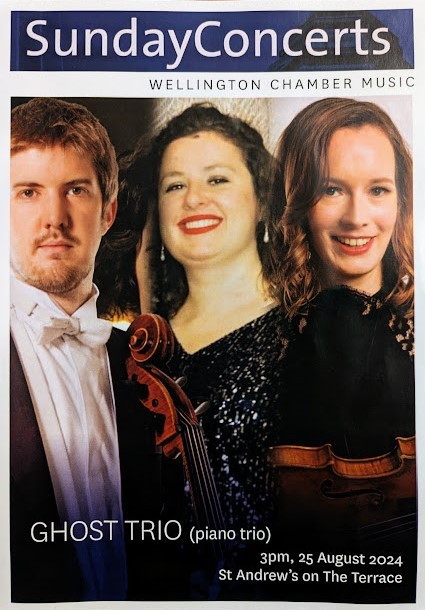
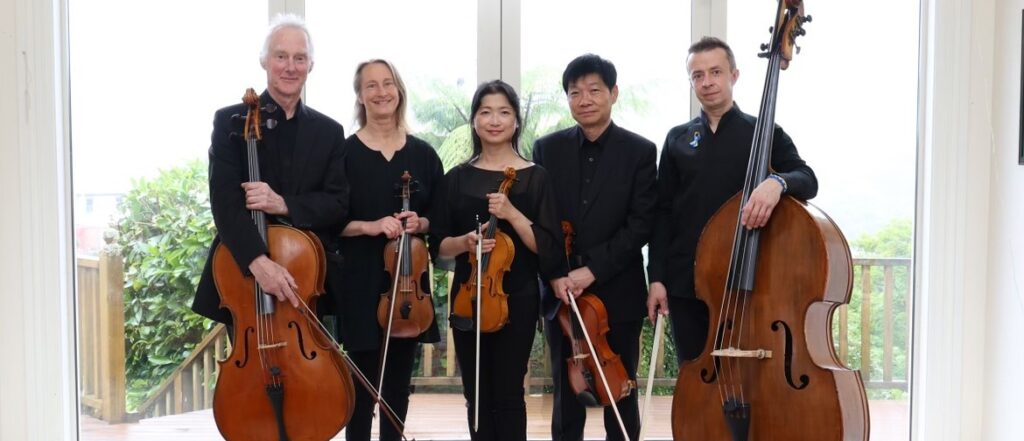
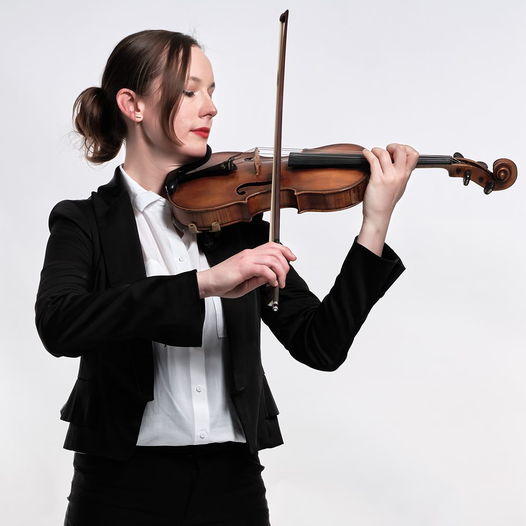
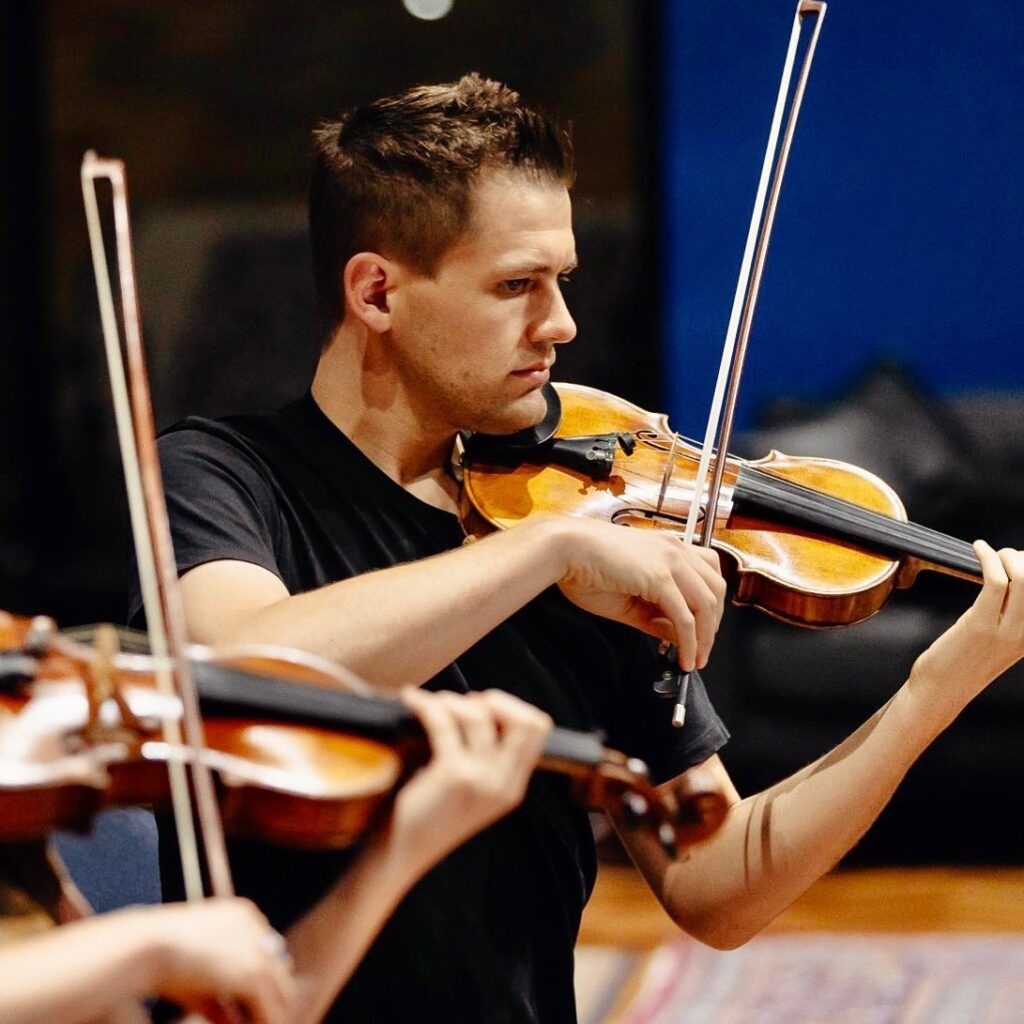 Peter Clark
Peter Clark